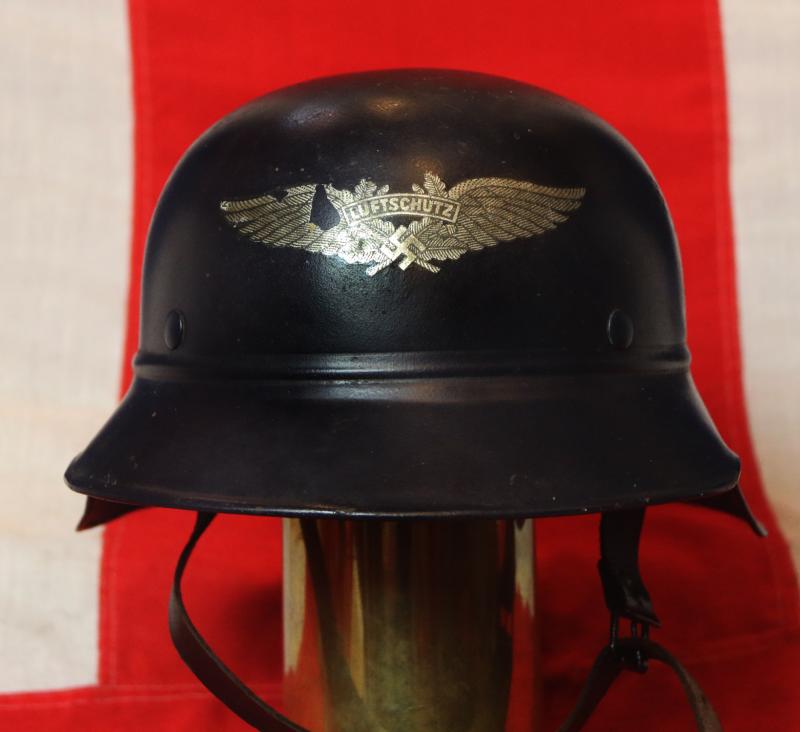An Original German WW2 Luftschutz Air Protection 'Gladiator ‘ Pattern Helmet. Maker Marked by F.W. Quist, Esslingen am Neckar in Baden-Württemberg,
Excellent decal with a few small losses, very clean interior liner, with its strap. Good blue paint and winged Luftschutz and swastika symbol transfer decal. Maker label with cost notice for replacement if lost. Maker stamped and marked with their code RL 2 39/21, which represents *F.W. Quist, Esslingen.
The Luftschutzwarndienst was a civilian organization that was tasked with alerting the population of air raid attacks and for providing safety in air raid shelters, and for assistance to the civilian population after an air raid. First instituted in 1933, the service was originally voluntary up until 1943, when it was made mandatory for all German civilians, including women. The members were expected to purchase their own helmets and gear as their contribution to the war effort. In their role, members were required to interpret various communication reports regarding bomber formations flying over Germany, operate search lights, observe bomber formations, help keep order among civilians affected by bombing raids, and to utilize air raid sirens before and after attacks.
Members of the Luftschutzwarndienst (Luftschutz) were typically volunteers assembled into area units within cities and towns that held the highest risk of being bombed. Many population centers were divided into area “blocks” with unit leaders assigned to each individual section of a city. Volunteer teams were expected to rotate shifts and sleep in large concrete bunkers that held all the provisions and amenities of a regular fortification. These also included the immense “flak towers” built around German cities upon which anti-aircraft batteries were stationed.
On 2 April 1943 Hermann Göring mandated compulsory service in the Luftschutz for all German civilians. For the first time this order included women. Members of the Luftschutz were expected to supply their own helmets as part of the contribution to the German war effort. A variety of helmets were available for 5 Reich Marks each, but many volunteers chose to scavenge captured helmets of Czech, Polish, Dutch, French, and Russian origin.
*FW Quist returned from commercial consumer goods production to armaments production in 1935 and submitted a patent for the production of steel helmets, which was greatly admired by the inventor of the steel helmet, Friedrich Schwerd, during a visit to the factory in 1936. FW Quist was one of four steel helmet manufacturers for the German Wehrmacht, but from 1938 also produced firefighters' and air raid helmets. The types M1935, M1940 and M1942 were examples of what was manufactured. During the National Socialist era, customers for these helmets were the Waffen-SS, and later the Bundeswehr and its field police in Germany. In addition to helmets, other armaments such as casings for bomb detonators were also produced during the Second World War. In 1942, 97 percent of the items manufactured by FW Quist were intended for use in the war. Silver-plated metal goods were only allowed to be produced to raise foreign currency for export . Helmets made by Quist were noted for their thick metal and well shaped proportions generally showing high craftsmanship
Code: 25468










